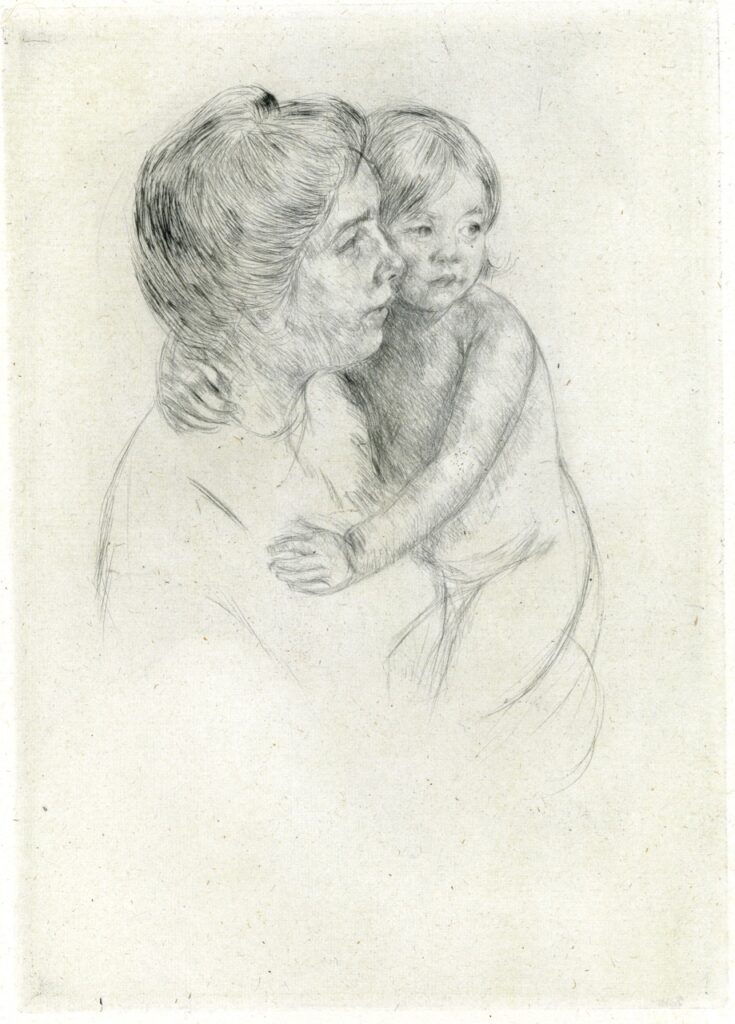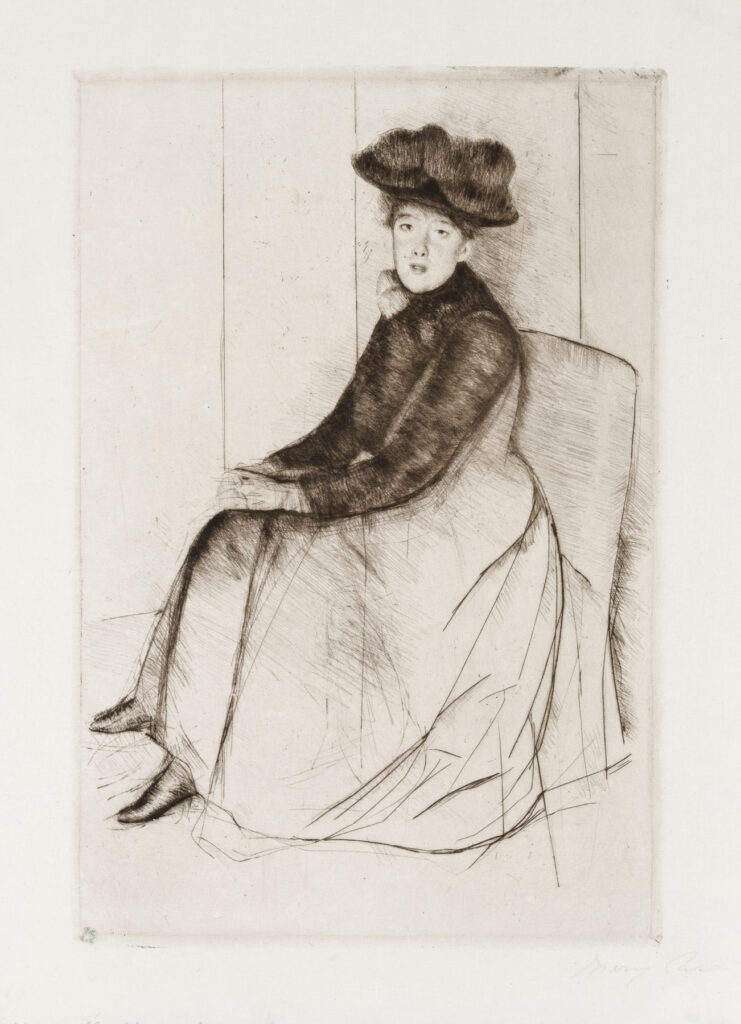The Printmaker Mary Cassatt
The printmaker Mary Cassatt (1844-1926) favored two printmaking techniques: softground etching and drypoint. With softground etching, she would lay a pencil drawing over a copper plate coated in acid-resistant wax. Then she would retrace the drawing with some force, pushing down into the waxed surface to reach the metal. The paper would then be peeled away and the plate immersed in an acid bath, which would bite into the exposed copper, incising lines into it. The plate was then rinsed, cleaned of remaining wax, inked, and run through a press, transferring the image onto paper. Cassatt often combined softground etching with aquatint, a process that creates areas of tone rather than line. In the mid-1880s, Cassatt began making drypoints. With this medium, she would use a hard stylus or needle to incise lines directly into a copper plate, which was then inked and printed.

Mary Cassatt began her career working almost exclusively as a painter. She embraced printmaking as an additional form of artistic expression in 1879. Her interest in prints stemmed from the innovative methods she saw used by the leading printmakers of the day, especially Edgar Degas. Working with Degas, Cassatt learned how to make prints and continued creating them for the rest of her life.
Cassatt’s prints reflect the lives of upper-class women in Paris in her day. They focus on scenes of domesticity, childcare, and outings to the opera. They were unconventional both in terms of technique—she would combine various printmaking methods—and subject matter, namely depictions of women’s inner states of mind, solitary moments, and intimate interactions with friends and family members. This focus on the interior experience of social and private spaces was entirely modern, and it continues to resonate with viewers more than a century later.

Mary Cassatt is best known for her tender scenes of women with small children. She began to explore the subject in the late 1880s in printmaking and painting. Some of the women pictured in these works were mothers, but many were paid caretakers who modeled for the artist. The scenes offer a glimpse of childcare in the homes of a privileged class, and provided Cassatt the opportunity to depict the human figure from multiple perspectives.
Critics, who were all male, remarked on Cassatt’s particular suitability for these kinds of subjects, noting that she was a woman artist. Joris Karl-Huysman, for instance, said at the time that “only a woman is able to paint childhood.” Cassatt may have been operating under certain limitations and expectations because of her gender, but she was nevertheless ambitious and experimental in terms of activating otherwise static interiors, shaping contours of juxtaposed bodies, and probing the psychological dynamics of domestic labor.
Mary Cassatt The Printmaker
